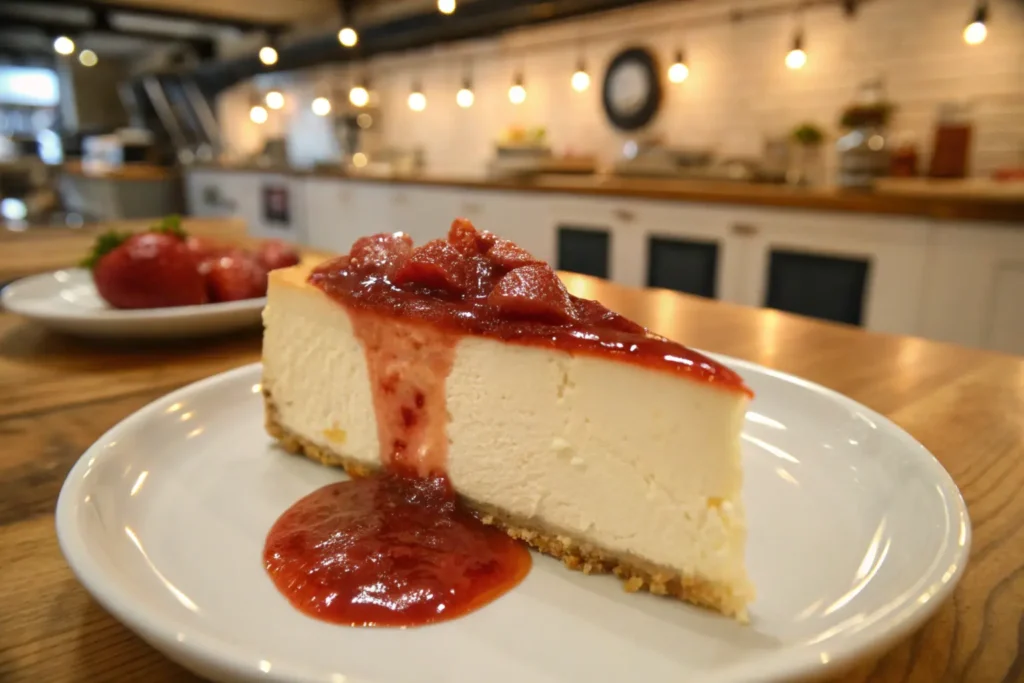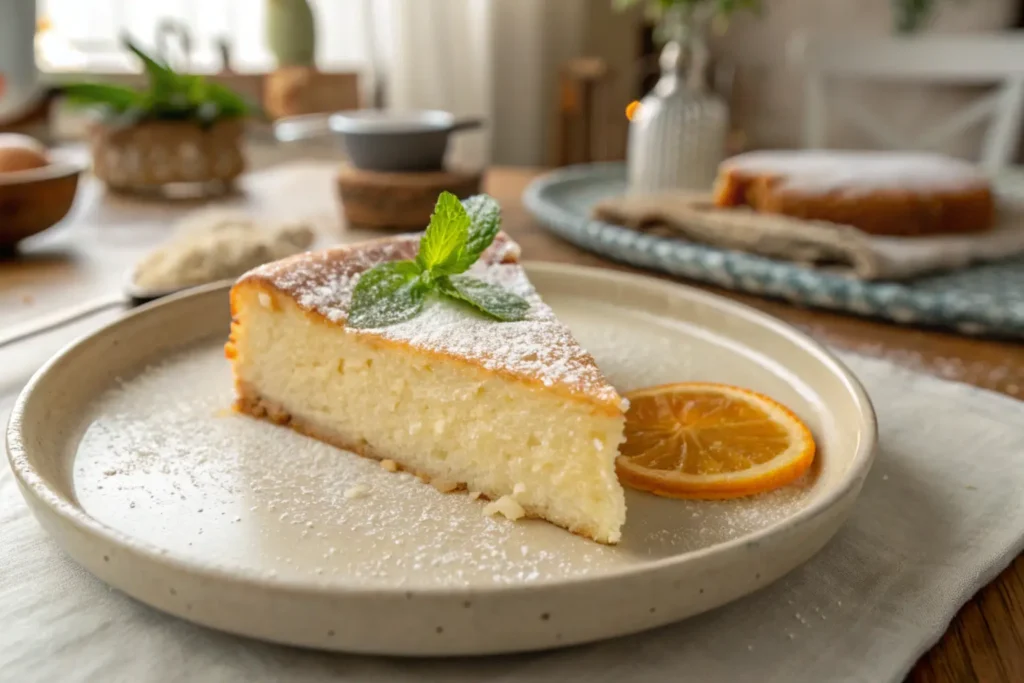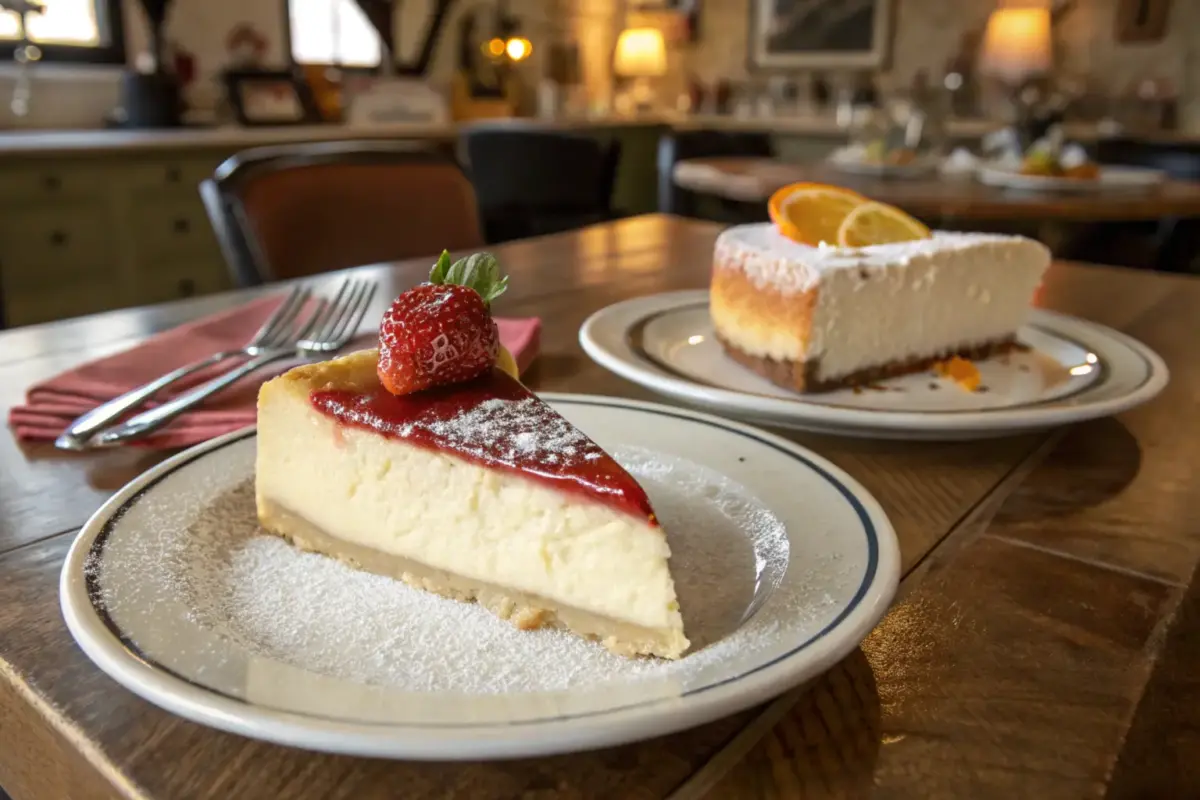Introduction to Cheesecakes
Cheesecake has long been a beloved dessert, cherished for its rich, creamy texture and indulgent flavors. This iconic treat transcends cultures and continents, adapting to local tastes while maintaining its essence. Cheesecakes are often seen as a symbol of celebration, effortlessly gracing tables during festive occasions. Understanding the nuances of this dessert involves delving into its history, global variations, and the unique characteristics that define specific styles, such as New York cheesecake and Italian cheesecake.
The History of Cheesecakes: Origins and Cultural Influence
The history of cheesecakes dates back thousands of years, with roots in ancient Greece. Early records suggest that cheesecakes were served to athletes during the first Olympic Games in 776 BC as a source of energy. Made from simple ingredients like cheese, flour, and honey, this early version laid the groundwork for modern adaptations.
The Roman Empire later adopted the recipe, adding eggs and baking the mixture. As the Romans expanded their reach, they introduced cheesecakes to Europe. Each culture embraced the dessert, incorporating local ingredients and flavors. By the Renaissance, cheesecakes became a staple in European culinary traditions, eventually making their way to America with immigrants who brought family recipes.
This evolution reflects not only the globalization of food but also the adaptability of cheesecakes, making them a dessert with a rich historical tapestry.
Popularity Around the World: American vs. European Cheesecakes
Cheesecakes have achieved global acclaim, with distinct styles emerging in different regions. In America, cheesecakes are often characterized by their dense and creamy texture, typically made with cream cheese. The New York cheesecake, in particular, is synonymous with indulgence, boasting a rich and smooth consistency.
In contrast, European cheesecakes vary greatly across countries. German cheesecakes, for instance, frequently use quark cheese, resulting in a lighter texture. Italian cheesecakes, made with ricotta, lean towards a tangy and airy profile. These variations showcase how ingredients and techniques can significantly influence the final product.
While American cheesecakes often emphasize decadence, European styles prioritize a balance of flavors and textures. This cultural divergence highlights the versatility of this dessert, appealing to a wide array of palates.
Defining New York Cheesecake

The New York cheesecake is arguably the most famous cheesecake style worldwide. Known for its luxurious texture and straightforward flavor, this dessert embodies indulgence in its purest form. Its preparation relies on specific ingredients and techniques that set it apart from other variations.
Key Ingredients: Cream Cheese, Sugar, Eggs
At the heart of a New York cheesecake lies its simple yet crucial ingredient list. Cream cheese is the star, providing the dessert’s signature richness. Combined with sugar, eggs, and vanilla extract, the batter achieves a perfect balance of sweetness and creaminess.
Some recipes incorporate heavy cream or sour cream, enhancing the cake’s texture without overshadowing the cream cheese’s natural flavor. The absence of overpowering additives ensures that the cheesecake remains true to its roots.
Baking Process: Use of Water Baths
The baking process of a New York cheesecake is as crucial as its ingredients. A water bath, or bain-marie, is often used to maintain an even baking temperature. By placing the cheesecake pan in a larger tray filled with hot water, bakers prevent cracks and ensure the texture stays smooth.
This method allows the cake to bake gently, preserving its dense yet creamy consistency. Skipping the water bath can result in uneven cooking or undesirable dryness, detracting from the dessert’s signature qualities.
Texture and Flavor Profile: Dense and Creamy
A true New York cheesecake is celebrated for its dense and creamy texture. The balance between richness and smoothness ensures every bite is indulgent yet satisfying. Its flavor is straightforward, with the cream cheese taking center stage, complemented by a hint of vanilla and a subtle sweetness.
This texture and flavor combination distinguishes New York cheesecake as a quintessential dessert, ideal for those who enjoy a luxurious, no-frills indulgence.
Defining Italian Cheesecake

Italian cheesecake offers a lighter, more refined take on the classic dessert. Its simplicity and tradition shine through, emphasizing fresh, wholesome ingredients that reflect Italian culinary values.
Key Ingredients: Ricotta Cheese, Citrus Zest
The foundation of an Italian cheesecake lies in its use of ricotta cheese. Unlike cream cheese, ricotta is lighter and slightly grainy, lending the dessert its unique texture. Citrus zest, often from lemons or oranges, adds a refreshing tanginess, enhancing the cake’s flavor profile.
Additional ingredients may include sugar, eggs, and occasionally flour or almond meal for structure. The simplicity of these components allows the natural flavors to shine.
Baking Process: Variations in Technique
Italian cheesecake baking methods vary depending on regional traditions. Some recipes call for a crust made from crushed biscuits or shortcrust pastry, while others forgo a crust altogether. Unlike New York cheesecake, a water bath is rarely used.
The batter is often mixed less thoroughly than its American counterpart, resulting in a slightly rustic texture. This approach highlights the natural characteristics of ricotta, giving the dessert its signature lightness.
Texture and Flavor Profile: Light and Airy
Italian cheesecake is renowned for its light and airy texture, a stark contrast to the dense nature of New York cheesecake. The use of ricotta contributes to this ethereal quality, while the citrus zest provides a subtle brightness.
Its flavor is less sweet and more nuanced, making it an excellent choice for those who prefer a delicate dessert. The combination of lightness and tanginess creates a satisfying yet not overpowering experience.
Comparison: New York vs. Italian Cheesecake
Understanding the distinctions between New York and Italian cheesecakes offers valuable insight into how ingredients, techniques, and cultural preferences shape this iconic dessert.
Differences in Ingredients: Cream Cheese vs. Ricotta
The most significant difference between the two styles lies in their primary ingredient. New York cheesecake relies on cream cheese, delivering a dense and creamy texture. In contrast, Italian cheesecake uses ricotta cheese, which results in a lighter, more textured consistency.
Both ingredients serve as the foundation for their respective styles, dictating the overall flavor and texture.
Differences in Texture: Dense vs. Light
New York cheesecake is celebrated for its luxurious density, achieved through a careful balance of cream cheese and eggs. Italian cheesecake, however, leans towards an airy, almost cloud-like texture, thanks to the incorporation of ricotta and the omission of heavy creams.
This textural difference is perhaps the most defining characteristic that separates these two iconic desserts.
Differences in Preparation Methods: Water Bath vs. No Water Bath
The use of a water bath is integral to New York cheesecake, ensuring an even bake and preventing cracks. Italian cheesecake, on the other hand, often forgoes this technique, opting for a more rustic approach that embraces slight imperfections.
These contrasting methods highlight the differing philosophies behind the two styles—one aiming for precision and uniformity, the other for simplicity and authenticity.
Cultural Significance
Cheesecakes hold a special place in culinary traditions, serving as symbols of heritage, celebration, and indulgence. Their unique roles in Italian and American cuisines highlight their adaptability and widespread appeal.
Italian Cheesecake in Traditional Cuisine: Easter and Celebrations
In Italy, cheesecake is deeply rooted in cultural traditions, especially during Easter. Italian cheesecake, often referred to as Pastiera or ricotta-based cheesecake, is a staple dessert in many households during this holiday. The inclusion of citrus zest and sometimes candied fruits aligns with the festive and refreshing themes of spring.
Italian families often pass down cheesecake recipes through generations, making it a nostalgic dish tied to family gatherings and celebrations. These cheesecakes are typically lighter and less sweet, pairing beautifully with espresso or dessert wines, reinforcing their place in Italy’s rich culinary heritage.
New York Cheesecake in Modern Cuisine: A Restaurant Staple
New York cheesecake, in contrast, has become synonymous with indulgence and modern dining. Found on menus of upscale restaurants and casual diners alike, this dessert is a hallmark of American cuisine. Its rich, creamy texture and straightforward flavors make it a reliable crowd-pleaser.
The popularity of New York cheesecake extends beyond restaurants, featuring prominently in bakeries and dessert bars. Its versatility also allows for creative variations, with toppings ranging from fresh fruit to decadent chocolate ganache. This adaptability has cemented its place as a dessert icon in contemporary food culture.
Health Considerations
Cheesecake, while undeniably delicious, is often considered a decadent treat. However, understanding the nutritional differences between styles can help make informed choices.
Nutritional Differences: Caloric Content and Fat Levels
New York cheesecake is typically higher in calories and fat, owing to its use of cream cheese and sometimes heavy cream. A single slice can contain upwards of 400 calories, depending on the recipe.
Italian cheesecake, made with ricotta cheese, tends to be lighter in both calories and fat. This makes it a slightly healthier option for those seeking indulgence with moderation. However, the addition of sugar and other ingredients can still make it calorie-dense.
Both styles can be adapted to suit dietary preferences, such as using low-fat cheese alternatives or reducing sugar content.
Allergen Awareness: Dairy Variants
Cheesecakes are inherently dairy-heavy, posing challenges for those with lactose intolerance or dairy allergies. New York cheesecake, with its reliance on cream cheese, is particularly rich in lactose.
Italian cheesecake, while still dairy-based, may be slightly easier to digest for some due to the natural properties of ricotta. For those with allergies, lactose-free or plant-based alternatives, such as almond or cashew-based “cheese,” can be used to recreate the cheesecake experience without compromising on flavor.
Making the Perfect Cheesecake at Home
Creating a flawless cheesecake at home requires attention to detail and the right tools. Both New York and Italian styles can be mastered with a little practice.
Essential Tools: Baking Pans and Mixers
Investing in high-quality tools is crucial for cheesecake success. A springform pan is essential, allowing for easy removal without damaging the cake. For New York cheesecake, a water bath-friendly pan is ideal.
A stand mixer or hand mixer ensures smooth batter consistency, reducing the likelihood of lumps. Additionally, a kitchen scale can help measure ingredients precisely, which is particularly important for achieving the right texture.
Tips for Success: Avoiding Cracks and Overbaking
To prevent cracks, avoid overmixing the batter, which can incorporate too much air. For New York cheesecake, the water bath helps maintain even baking and reduces the risk of cracking.
Monitoring the baking time is equally important. Cheesecakes are done when the center is slightly jiggly but the edges are set. Overbaking can result in a dry, crumbly texture. Allowing the cheesecake to cool gradually, often in the oven with the door ajar, helps it set properly without cracking.
FAQs
Which cheesecake is easier to make, New York or Italian?
Italian cheesecake is easier to make because it involves fewer steps and doesn’t require a water bath. New York cheesecake demands more precision with techniques like water bathing and careful mixing to achieve its dense texture.
Can I use cream cheese instead of ricotta or vice versa?
Yes, but swapping cream cheese for ricotta or vice versa changes the texture and flavor significantly. Ricotta creates a lighter, grainier texture, while cream cheese delivers a denser, creamier base. Adjust the recipe to balance the consistency and flavor.
How do I check if my cheesecake has finished baking?
Check your cheesecake by observing its center and edges. The edges should feel firm, while the center should wobble slightly when you gently shake the pan. Avoid overbaking, as it can make the cake dry or lead to cracks.
What gluten-free crust options work well for cheesecake?
You can use almond flour, crushed gluten-free cookies, or oats to create a gluten-free crust. Always verify that all ingredients, including fillers or binders, are certified gluten-free to meet dietary needs.
Why does my cheesecake crack on top?
Your cheesecake cracks because of overbaking, mixing in too much air, or rapid temperature changes. To avoid cracks, bake at a consistent temperature, use a water bath, and let it cool gradually.
What toppings work best for New York and Italian cheesecakes?
For New York cheesecake, bold toppings like berry compote, chocolate ganache, or caramel sauce pair wonderfully. Italian cheesecake matches well with lighter options like fresh figs, honey, or a sprinkle of powdered sugar. Choose toppings that enhance each style’s unique flavor profile.
Conclusion
Cheesecakes are not just desserts; they are culinary masterpieces that showcase the beauty of blending tradition with innovation. Whether you savor the luxurious, dense texture of New York cheesecake or the light and airy feel of Italian cheesecake, each style offers a unique experience that caters to different palates.
Both variations highlight the importance of high-quality ingredients, from the cream cheese that defines New York cheesecake to the ricotta cheese and citrus zest that elevate Italian cheesecake. The baking techniques, such as using a water bath for New York cheesecake, further emphasize the artistry behind crafting these beloved treats.
Making cheesecake at home allows you to experiment with flavors, textures, and toppings, ensuring a dessert that reflects your personal preferences. Whether you’re recreating a classic New York cheesecake or embracing the rustic charm of Italian cheesecake, every slice is a testament to the timeless appeal of this dessert.
With the right tools and tips, you can master the art of baking cheesecake and create a dish that’s perfect for any celebration or quiet indulgence. Cheesecakes, in all their forms, remain a versatile and cherished choice, delighting dessert lovers around the world.


1 thought on “What is the difference between New York cheesecake and Italian cheesecake?”